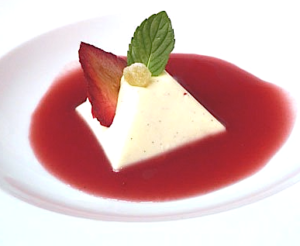Rosé wines are getting more and more consideration from American drinkers then ever before. Regarded as somewhat feminine drinks 5 to 8 years ago, wine lovers from all horizons and genders have realized how pleasing rose wines can be and how versatile they actually are when it comes to food pairing.
 It is often heard from would be rosé-drinkers that the style of wine they enjoy most is one that is “not too sweet”. Nowadays, rosés are indeed made on the dry side, far, far away from the “blush” white zinfandels and their cloying sweetness. Rosés are now for the most part, lively summery wines, elegant, and of course a touch “feminine,” and pair well with various kinds of dishes from seafood to risotto, nicoise salads to roasted chicken with herbs and paella.
It is often heard from would be rosé-drinkers that the style of wine they enjoy most is one that is “not too sweet”. Nowadays, rosés are indeed made on the dry side, far, far away from the “blush” white zinfandels and their cloying sweetness. Rosés are now for the most part, lively summery wines, elegant, and of course a touch “feminine,” and pair well with various kinds of dishes from seafood to risotto, nicoise salads to roasted chicken with herbs and paella.
Today we will take a look at one of the most respected wine regions that produces some of the best Rosé in France–the Provence region. Located in southeastern France on the Mediterranean sea, la Provence is know for its warm climate, sun-drenched fields, and savory dishes. A food lover’s heaven, Provence is known for its unforgettable flavors. Dishes are cooked with love using the best indigenous ingredients such as olives, olive oil, fish (some of the best being Loup and Rouget), lamb, as well as local fruits such as peaches, apricots and melons, and of course its wines. La Provence is indeed home of the best expressions of some of the fuller bodied and driest French Rosés.
When selecting the rosé of your choice it is important to understand the difference between “sweet” and “dry”. A wine can be dry, as opposed to sweet, if it contains a very small amount of diluted sugar, so small it is not perceptible by our senses. But this is not the only reason one can feel some sweetness to a wine. It is also important to understand that two identical wines with the same amount of residual sugar can taste more or less dry depending on their acidity level. Indeed, the higher the acid, the driest the wine. Example: when mixing water and sugar, the result is a very sweet, almost undrinkable liquid. Here the acidity of the drink is very low. Add some lime juice to the mix. By boosting the acidity of the drink, the sweetness becomes much less perceptible.
Conclusion: when a wine is drier than another it does not mean that it contains less sugar. Its acidity might simply be higher. Provence wines tend to ally the best of both worlds: low residual sugar and high acid, for a very dry style of wine.
So what Rosé would I suggest for your Seduction meal?
Try the 2007 Commanderie de Peyrassol Rosé
The Commanderie de Peyrassol is located in the heart of Provence, near routes traveled by Crusaders in the early Middle Ages. It was founded by the Knights of Templar who were dedicated to protecting the Crusaders en route to, and in, the Holy Land. The first recorded harvest took place in 1256 and wine-making has continued uninterrupted throughout the centuries. The current proprietor, Francoise Rigord, has been making the wines at Peyrassol since 1981 and has now been joined by her son, Francois. The estate is surrounded by 165 hectares of Mediterranean forest with 65 hectares of vineyards being cultivated on this dry, rocky clay and limestone based soil. No synthetic fertilizers, pesticides or fungicides are used in the vineyards.
The 2007 Commanderie de Peyrassol Rosé is made from a blend of Syrah, Grenache and Cinsault. A pale watermelon-pink color, the nose exhibits aromas of orange peel, lime and dried flowers. The wine is full bodied on the palate, dry, well balanced with flavors of tangerine and strawberries. Acidity is high. The wine finishes on notes of caramel. It is a definitely very good showing and a great value as well.
So for your next Seduction Meal pair your 2007 Commanderie de Peyrassol Rosé with your favorite Bouillabaisse, Salad Nicoise, Ham or Proscuitto, Roast Chicken, or Mezze Vegetable dishes.
Cost: About $16 a bottle.
Where to find it?
Contact importer Neal Rosenthal
800.910.1990
nfo@madrose.com


